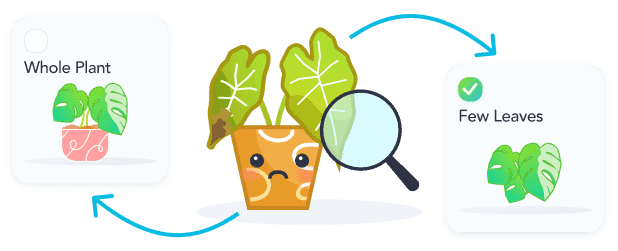Every 7d
Recommended Frequency
1 /2 cup of water
Recommended Amount
The Umbrella Tree doesn't like extremely wet soil, so make sure you have a pot that drains water at the bottom. You should water your Umbrella Tree whenever the top couple inches of soil are dry.
Every 14d
Recommended Frequency
Fertilize your Umbrella Tree every two weeks during spring and summer using a 20-20-20 fertilizer diluted by three-quarters strength.
Indirect Sun
Recommended
Indirect Sun or Filtered Sun is when sun exposure is being filtered through a sheer curtain or is not able to have the sun's rays directly hit the leaves/flowers of your plant.
Every 730d
Recommended Frequency
Repot your Umbrella Tree every two years, or once it outgrows its pot.
Peat Soil
Recommended Soil
Peat Soil is an acidic soil that retains a lot of moisture and slows decomposition. Due to such a high moisture retention this mix may require irrigation to help with draining. This soil type is best used when paired wit...

Shop Umbrella Tree
Questions about Umbrella Tree
An umbrella tree plant, scientifically known as Schefflera arboricola, is a popular houseplant known for its glossy, green leaves that radiate from a central point, resembling an umbrella. This easy-to-care-for plant can...

Toxicity of Umbrella Tree

Common Pests and Diseases
Root Rot
Overwatering
To address root rot in umbrella trees, first, allow the soil to dry out by reducing your watering frequency. Ensure the pot has adequate drainage holes and consider repotting the plant into fresh, well-draining soil. If the roots are severely damaged, trim away the rotted parts before repotting. Moving forward, water the plant only when the top inch of soil feels dry to the touch, and ensure it's in a pot that allows excess water to escape.
Leaf Drop
Underwatering
To address leaf drop caused by underwatering in umbrella trees, it's crucial to establish a consistent watering schedule. Water the plant thoroughly until excess water drains out, but allow the top inch of soil to dry out before the next watering. Avoid letting the plant sit in water as this can lead to root rot. If the plant has been severely underwatered, immerse the pot in a water bath for a few minutes to rehydrate the soil evenly. Monitor soil moisture regularly and adjust your watering frequency based on seasonal changes.
Scale Insects
Scale insects are small, sap-sucking pests that attach themselves to the stems and leaves of umbrella trees, causing yellowing leaves and stunted growth.
To manage scale insects, start by manually removing them with a soft cloth or a toothbrush dipped in soapy water. For more severe infestations, apply neem oil or insecticidal soap directly to the affected areas, ensuring to cover both sides of the leaves and the stems. Repeat the treatment every 7-10 days until the infestation is under control. Additionally, increasing humidity around the plant can help prevent future infestations, as scale insects thrive in dry conditions.
Leaf yellowing and drop
Excessive light
Umbrella trees prefer bright, indirect light but can suffer from too much direct sunlight, leading to leaf yellowing and drop. To remedy this, relocate your plant to a spot where it receives ample light without direct exposure to harsh sunlight, especially during the hottest parts of the day. If moving the plant isn't feasible, consider using a sheer curtain to diffuse the light. Regularly rotating the plant can also ensure even light distribution.

Related Plants
Other Articles:
Top 10 Most Popular Roses
Mar 22, 2022
How to Care for China Roses
Mar 11, 2022
How to Care for Chinese Money Plants
May 15, 2020
How to Grow and Care for A Bird of Paradise
Apr 26, 2020
Top 10 Plants To Grow In A Terrarium
May 31, 2022
How to Grow and Care for Lucky Bamboo
Mar 29, 2022
How to Grow and Care for Corn Plants
Mar 29, 2022
How to Care for Madagascar Dragon Trees
Mar 21, 2022



